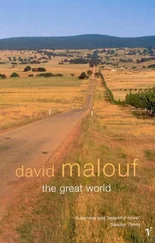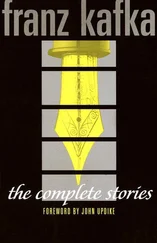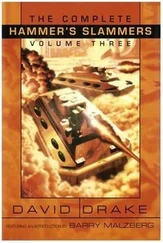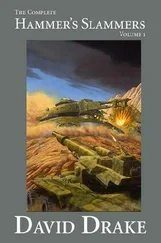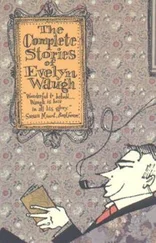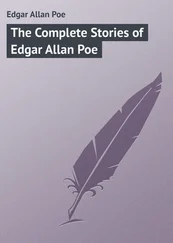None of our kind come to us down that long corridor. Only the things they made and made use of, which still somehow keep contact with them. We look through the cracked bowl to the lips of children. Our hand on an axe-handle fits into an ancient groove and we feel the jarring of tree trunk on bone. Narrowly avoiding through all their days the accidents that might have toppled them from a shelf, the flames, the temper tantrums, the odd carelessness of a user's hand, they are still with us. We stare and are amazed. Were they once, we ask ourselves, as undistinguished as the buttons on our jacket or a stick of roll-on deodorant? Our own utensils and artefacts take on significance for a moment in the light of the future. Small coins glow in our pockets. Our world too seems vividly, unbearably present, yet mysteriously far off.
Each decade a new class of objects comes into being as living itself creates new categories of use. After the centuries of the Bowl (plain or decorated with rice-grains, or with figures, some of them gods, in hieratic poses, or dancing or making love) come the centuries of the Wheel, the age of Moving-across-the-Surface-of-the-Earth, from the ox-cart to the Silver Spur.
Later again, it is not only objects that survive and can be collected. Images too, the shadowy projection of objects, live on to haunt us with the immediacy of what was: figures alone or in groups, seated with a pug dog on their knees or stiffly upright in boating costume beside an oar; a pyramid of young men in flannel slacks and singlets holding the difficult pose for ever, blood swelling their necks as they strain upwards, set on physical perfection; three axemen beside a fence, leaning their rough heads together; the crowd round an air-balloon. Bearded, mono-cled, or in hoop skirts under parasols, and with all their flesh about them, they stare boldly out of a century of Smiles …
Not long ago,in the Museum of the Holocaust at Jerusalem, a middle-aged American, an insurance assessor, gave a sudden cry before one of the exhibits, threw out his arms, and while two maiden ladies from Hannibal, Missouri, looked on in helpless dismay, fell slowly to his knees — then, clutching his chest, even more slowly to the pavement at their feet. They tried to help him, but he did not get up again.
His tour companions had found him difficult, a loud, dull fellow. He had informed them that he made eighty-five thousand dollars a year, had a house at Fresno and a ranch near Santa Fe, was divorced from a woman called Emmeline who had cost him his balls in alimony, had a son who was on heroin, voted for Reagan, hated the Ruskies and that goddamned Ayatollah — the usual stuff. He wore a gold ring on one finger with a Hebrew letter (he was Jewish) and now, right in the middle of a nine-day tour of all the holy places, Christian, Jewish, and you-name-it, he was dead. He had, it seems, been confronted here with the only surviving record of his family, a group picture taken forty years before on the welcoming-ramp at Treblinka: his mother, father, two sisters, his six-year-old self, all with the white breath pouring out of their mouths in the January cold, heads turned in half-profile and slightly lifted towards the darkness just ahead, with beyond it (though this they could not have foreseen) a metre of roughened museum wall and the door into another country.
It was that vision of himself in the same dimension as the long dead that struck the man and struck him down: that rather than any recollection of the moment when the shot was taken. To see thus, from the safe distance of an American travel-group he had joined in Athens, Greece, that lost gathering to which he most truly belonged, and to see at last just where it was (despite the forty years’ detour) that he was headed, had pushed him to the only step he could have taken — straight through the wall; and an error made nearly half a century ago, when an officer had breathed too lightly on a rubber stamp, was righted at last and a number restored to sequence. His cry was a homecoming.
His fellow-travellers on this later occasion, though shaken, went on to the rest of the experience: images, objects, carefully worked facts and descriptions. Only that one man went right to the centre, stepping through a wall that was in the end as insubstantial as breath, and on into flame.
Gillian Vaughan came back from her great-aunt Connie's with a present, a large and rather dog-eared envelope that she was clutching with fervour to her schoolgirl breast and which she refused at first to show.
Her mother was disconcerted, and not for the first time, by the child's intractable oddity. At just eleven Gillian was old-fashioned— that was the kind way of putting it, and stubbornly so; it was something she would not outgrow. It worried the mother, since her own nature was uncomplicated, easy (or so she thought), and she would have wished for the same qualities in her child. “Gillian darling,” she protested now, but mildly, she was easily hurt, "what on earth? — I mean, what are we to do with them?”
“Nothing,” the girl replied. “Look after them, that's all. I said I would and I will. You don't have to worry. I'll do it. They're Aunt Connie's most treasured possessions.”
The envelope contained five x-ray photographs, and the curious child had chosen them.
Connie Hermiston, Great-aunt Connie, was eighty-seven. For the past year or more she had been passing on to her various nieces, and to those grand-nieces with whom she had contact, the family relics she was responsible for and which she wanted to leave now in younger hands.
She was not herself a collector, but she had, because of her extreme age, become the custodian over the years of other peoples’ treasures— though treasures was too large a word for the jumble of bits and pieces she had stacked for safe-keeping in cupboards, drawers, and odd cartons and hat-boxes beside her wardrobe. Other peoples’ sentiments or passions might be more accurate, as they attached themselves, mysteriously sometimes, to a kewpie doll on a black crook, from the Brisbane Exhibition of 1933, a fan made of peacock-feathers, several evening bags, pearl-handled cake-forks, a little lounge-suite made of iridescent china, medals, pushers-and-spoons, Coronation cups, christening dresses, handpainted birthday cards with celluloid lace edges. None of it had any real value, it was just family stuff; but each item had its pedigree, with the name attached (so far as Great-aunt Connie's memory could be trusted) of a Hermiston or a Cope or a Vaughan or a Glynn-Jones. Offered something out of this treasure house that should be hers, some piece of family history that she should be the one to carry forward, Gillian had chosen the x-rays. Only now, when she regarded them with her mother's eyes, did she see that her choice might be peculiar.
She sighed, unhappy to discover that she had put herself, yet again, on the odd side of things.
“His name was Green,” she said solemnly, as if the specific detail might make a difference. “John Winston Green.” She meant the subject of the x-rays, which showed, in various degrees of ghostliness, in left and right profile but also frontally, the thorax and jaw of a young man.
Her mother's sister, Aunt Jude, who had been at the window, came up now, and leaning down she kissed the child on the top of the head, at the parting where her hair was drawn in pigtails.
Gillian looked up at her. Jude Hermiston smiled. She took the dusty package from her sister and examined it. “Let's look,” she said, "shall we?”
She slipped the first x-ray out of the package, then one by one the rest.
She had seen them before. Years back, on visits to Aunt Connie's, she too had been allowed to take from their envelope the stiff, transparent sheets, and holding them to the light had seen him, this bit of him: John Winston Green, Aunt Connie's young man. Odd emotions stirred in her. They seemed her own, but were too deeply overlaid with what she had heard and caught breath of from Aunt Connie for her to be sure. Except that the emotions were powerful and real — a kind of astonished awe as before a common mystery.
Читать дальше

